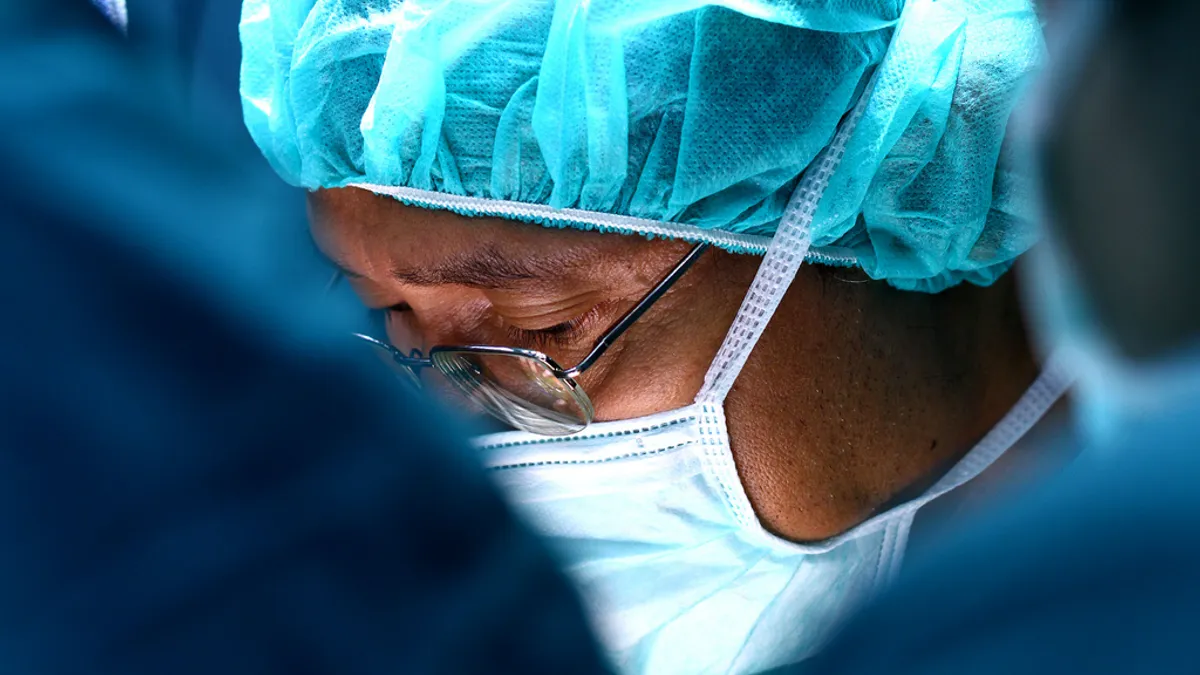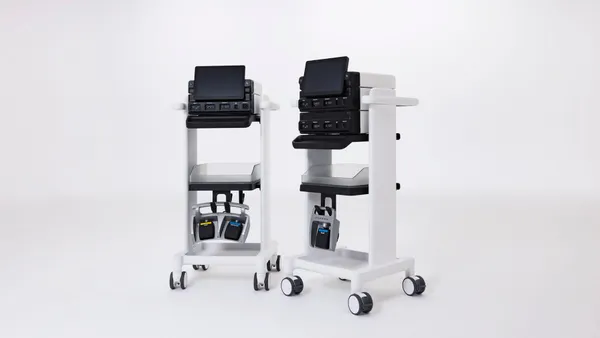Dive Brief:
- Use of Edwards Lifesciences’ transcatheter aortic valve replacement devices is accelerating sharply in the third quarter from a 16% increase in the second quarter, according to Jefferies analysts who developed a model to track U.S. hospital purchasing data.
- The projected third quarter TAVR growth spurt is based on purchasing data from July only and represents 60% of medical centers expected to report, the analysts said.
- Nonetheless, although it is incomplete and early, the latest data suggests a significant utilization uptick in the range of 39% to 42% is occurring, the analysts said in a report to investors.
Dive Insight:
If the prediction is on target, it could point to hospital buying in anticipation of FDA’s expanded indication approved in August for Edwards’ Sapien 3 TAVR in low-risk patients. That approval, for patients who are at low risk for complications or death from traditional surgical valve replacement, is expected to greatly widen the patient pool for TAVR.
Edwards pioneered development of TAVR as a minimally invasive alternative to open-heart surgery for patients with severe aortic stenosis, a narrowing of the valve opening. Initially approved for high-risk valve patients who are considered too frail for open-heart surgery, the catheter-based procedure was approved for intermediate-risk patients in December before receiving the latest indication for the low-risk population.
The expanded FDA indication had been widely expected after clinical trial results unveiled in March for Sapien 3 and Medtronic’s CoreValve Evolut system showed low-risk patients did as well or better after TAVR when compared with patients who underwent surgical valve replacement. Many more doctors and their patients are expected to choose TAVR over the surgical route in the coming years.
The Jefferies forecast for a sharp upturn in third-quarter hospital TAVR purchasing also suggests minimal impact on demand from Edwards’ U.S. recall this summer of 1,585 Sapien 3 Ultra delivery systems. The company issued an urgent field safety notice on July 9 to inform doctors that burst balloons had caused difficulty withdrawing the system and were linked to one death and 17 injuries. In August, the recall received FDA’s Class I label for devices that may cause serious injury or death.
Edwards planned to add a warning to physicians to inflate the balloon slowing and continuously during deployment. Jefferies analyst Raj Denhoy noted in August that Edwards was redesigning the Ultra delivery system. He expected the issue to be immaterial to revenue.
The historic raw data used in the Jefferies TAVR tracker is well-correlated with actual growth results, the analysts said. Second-quarter utilization captured by the model is in line with Edwards’ reported “high-teens” U.S. growth for the period. Hospital purchasing data for the model is sourced from one-third of U.S. TAVR centers that represent about 40% of volumes.
As the population eligible for TAVR expands, so too is the number of sites performing the procedure. CMS in June issued new reimbursement rules for medical centers performing TAVR, easing barriers to entry for hospitals that want to start a TAVR program.
U.S. doctors gained a third TAVR option this year when FDA approved Boston Scientific’s Lotus Edge system for high-risk patients. The system isn't authorized for the low-risk population; the company is currently studying its device in intermediate-risk patients.













